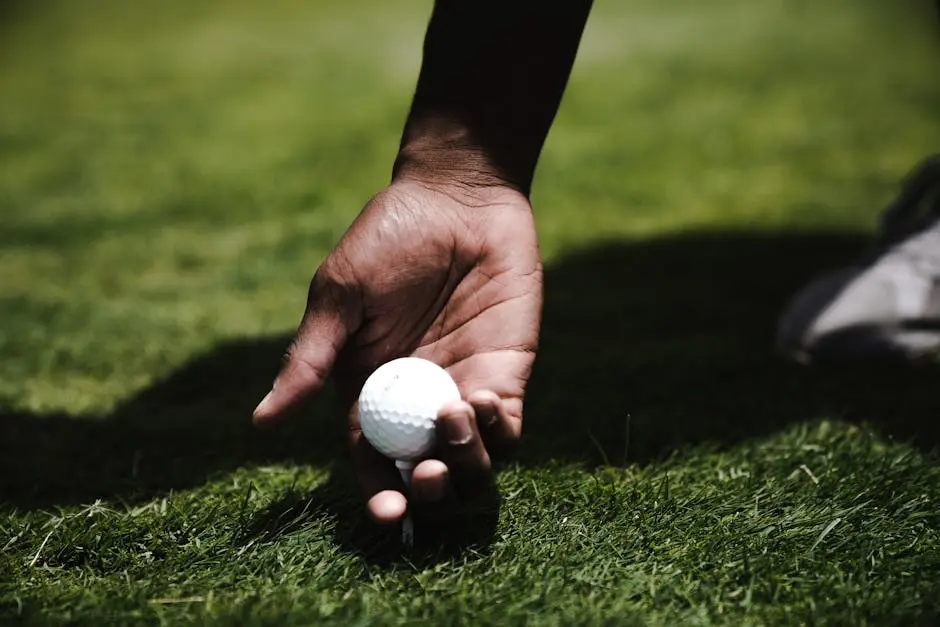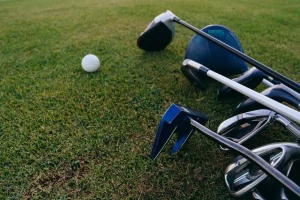Golf balls may seem like a simple object, but they play a pivotal role in the game of golf and have much more significance than most people realize. In this article, we will explore the various reasons why golf balls matter, beyond their obvious function. From technological advancements to their impact on player performance, let’s delve into the world of these small spheres and uncover why they are essential to the game.
1. The Evolution of Golf Ball Technology
The journey of golf ball technology is a fascinating one, marked by innovation and an incessant quest for improvement. From the early days of wooden golf balls, known as ‘featheries’, that were handmade and stuffed with feathers, we have come a long way. With the introduction of gutta-percha balls in the 19th century, players enjoyed more distance and consistency, setting the stage for the modern golf ball. Today’s golf balls are meticulously engineered with advanced materials and designs, showcasing a perfect blend of science and sport.
As we moved into the late 20th century, the golf ball underwent revolutionary changes with the advent of multilayer technology. These balls, often comprising of a solid core and several layers of elastomer or urethane, allow for varied performance based on swing speed and player skill level. Furthermore, manufacturers now prioritize aerodynamics, utilizing computer simulations to optimize dimple patterns and surface materials, thus enhancing lift and reducing drag during flight. Each advancement plays a significant role in shaping player performance on the course.
2. The Role of Golf Balls in Player Performance
A golf ball’s design can dramatically influence player performance, serving as a delicate balance between distance and control. For instance, those who prioritize distance often choose a harder ball that can achieve greater speeds off the tee. Conversely, players who emphasize ball control and feel might opt for a softer ball with less compression, providing enhanced feedback on crucial shots around the green. Understanding one’s playing style is critical in making the right choice.
Moreover, the consistency and feel of a particular golf ball during play can greatly affect a player’s confidence and overall enjoyment of the game. For example, players who find comfort in a specific brand or type of ball often see improved performance on the course, resulting in lower scores. This psychological aspect should not be underestimated, as comfort with one’s equipment can lead to improved concentration and better execution of shots. Ultimately, a player’s mental game is as crucial as their physical skills.
3. Understanding Dimples: More than Just a Design Choice
Dimples may seem like a simple aesthetic choice on a golf ball, but they are fundamentally linked to the ball’s performance. The pattern of dimples creates turbulence around the ball during flight, allowing it to stay aloft longer and minimizing drag. This phenomenon is scientifically proven: smoother spheres experience increased drag, whereas dimpled spheres capitalize on the lift generated during their flight, leading to greater distances.
The number, size, and depth of dimples can all influence a golf ball’s trajectory, making it crucial for players to understand how these factors can affect their game. Different brands have unique dimple designs tailored to optimize performance for varied conditions, such as wind resistance and spin control. Thus, the choice of golf ball should extend beyond personal preference to also consider atmospheric conditions, further illustrating the intricate relationship between a seemingly simple feature and advanced ball performance.
4. How Different Materials Affect Distance and Control
The materials used in the construction of golf balls are a significant factor influencing both distance and control. For instance, cores made from rubber or synthetic materials can affect how energy is transferred during impact, impacting how far the ball will travel. This is particularly noticeable when comparing two-piece balls with a solid core against multi-layered balls, which can provide varied levels of spin and feel based on their design.
Furthermore, high-performance urethane covers are often preferred by professionals, as they offer superior spin and control around the greens. Understanding the relationship between materials and performance characteristics can guide players in choosing the right ball for their game. Whether a player is focused on achieving maximum distance or gaining finesse in short game situations, the right material can be the key to unlocking their potential.
5. The Impact of Compression on Ball Performance
Compression is a pivotal aspect that varies across different golf balls, significantly affecting how they respond to a player’s swing. A ball’s compression rating indicates how much it deforms upon impact; lower compression balls are ideal for slower swing speeds, as they compress more easily, providing the necessary feel and distance. Conversely, players with faster swings may prefer higher compression balls that return energy more efficiently.
This dynamic underscores the importance of selecting a golf ball that aligns with one’s swing characteristics. By paying attention to compression ratings, players can optimize their performance, achieving greater distances and improved accuracy. This becomes increasingly relevant when considering the varying conditions on the course, as a tailored golf ball choice based on swing speed can make a substantial difference when teeing off or aiming for the green.
6. Choosing the Right Golf Ball for Your Style of Play
Selecting the right golf ball tailored to your playing style can become a game-changer. Whether you’re a beginner trying to maximize distance or a seasoned player focusing on precision, understanding your strengths can guide you toward the ideal ball choice. As mentioned earlier, maintaining a suitable compression level that matches your swing speed is critical; conversely, the ball’s cover material will also heavily influence its performance on the green.
For example, some players might prefer a softer ball that enhances feel but sacrifices distance. On the other hand, those prioritizing length often gravitate towards firmer balls with high energy transfer. Testing various options can provide players with firsthand experience on how different balls work with their swing mechanics, allowing them to feel the difference in performance and confidently select their favorite.
7. The Environmental Impact of Golf Balls
Golf balls also carry an environmental footprint that merits consideration, especially as the sport continues to grow. Making informed choices on the types of balls purchased can have positive impacts on nature. For example, eco-friendly golf balls made from biodegradable materials can help reduce the amount of plastic waste found on courses and in natural habitats. As the conversation around sustainability becomes louder, the golf industry is beginning to heed these calls for responsible manufacturing practices.
The environmental considerations don’t end at materials; many manufacturers are also implementing more efficient production techniques that minimize waste. Players who remain mindful of their golf gear choices are contributing to a larger movement of sustainability in the sport. By selecting environmentally-conscious products, golfers can pave the way for a greener future, ensuring that the sport remains enjoyable for future generations.
8. The Psychology of Golf Balls: How They Affect Your Game
Interestingly, the psychology of golf balls encompasses how they affect a player’s mindset during a round. The importance of a personal connection to a specific ball brand cannot be understated. When players associate success with a particular golf ball type, it often leads to improved confidence on the course. This mental advantage can translate into lower scores as players feel assured with every swing.
Moreover, the visual appeal of a golf ball can influence a player’s attitude. Whether it’s a specific color, design, or brand logo, players might find extra motivation from aesthetics. Consequently, the psychological edge provided by a favorite ball can play a role in how a player approaches their game. Hence, understanding this mental component can enhance one’s performance and overall enjoyment during a round.
9. Iconic Golf Balls in History and Their Stories
Throughout the history of golf, certain golf balls have stood out due to their iconic status and unique stories. The most notable example is perhaps the Titleist Pro V1, which has dominated the market since its launch in 2000, consistently being the top choice among professionals. This ball is known for its remarkable consistency, which has greatly influenced tournaments worldwide. Many professionals attribute their success on the course to its superior design and performance.
Another intriguing chapter in golf ball history includes the classic Wilson Staff balls used during the heyday of the sport. These balls not only revolutionized player performance but also became a cultural phenomenon in golf lore. Players nostalgic for the era often recount tales of their favorite shots made with these traditional balls, highlighting their enduring impact on the game. Each iconic golf ball carries a legacy, contributing to the rich history of this beloved sport.
10. Future Innovations in Golf Ball Design
Looking ahead, the future of golf ball design promises exciting innovations that will likely enhance player performance further. Advanced materials and the integration of smart technology are burgeoning trends. For instance, some companies are experimenting with sensors embedded in golf balls to provide real-time data on distance, spin, and trajectory. Such advancements could revolutionize how players analyze their performance and adjust their play strategies.
Moreover, we are witnessing a push for more sustainable options, aligning with the broader movement toward environmental responsibility. Companies are developing golf balls that not only perform well but also decompose safely, mitigating their ecological footprint. As technology progresses, golfers can anticipate that the next generation of golf balls will blend high-performance demands with ecological considerations, creating a promising future for the sport.





